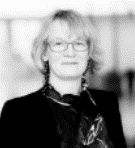About the programme
The Preclinical In Vivo Research graduate programme is aimed at students with an interest in developing their skills within the use of experimental animal models. These skills are cross disciplinary making the programme relevant to a wide group of students within in the biomedical field.
Historically, most new drugs have been developed by screening new drug candidates in experimental animal models. However, while the use of animals in research remains high, the value of the output from these studies has been questioned in recent years due to systematic studies revealing a lack of reproducibility of results from animal studies and poor translatability to the clinic.
One of several reasons for this inadequacy is the poor level standardisation in preclinical studies in general. The high level of standardisation known from clinical studies, e.g. the gold-standard Randomized Controlled Trial, has yet to be implemented in the preclinical in vivo research, but including basic virtues such as a pre-study hypothesis, a relevant power analysis, randomised group allocation, pre-determined endpoints, blinded sample analysis, etc massively improves the reproducibility of the studies. The pitfalls of animal experimentation are numerous and the use of live animals in research should not be taken lightly – therefore, a formal education is necessary to ensure ethical use of animals and the optimal scientific output of animal studies. We provide this necessary background.
 |
Jens Lykkesfeldt, Head of the Graduate Programme, Professor, Department of Veterinary and Animal Sciences, KU-SUND |
 |
Pernille Tveden-Nyborg |
Advisory Board |
|
|
Anne-Marie Heegaard |
|
 |
Dorthe Lundsgaard |
 |
Michael Didriksen, PhD |
 |
Lars Hornum |
|
Morten Egebjerg Malmberg |
|
| Gen Pan Student representative PhD student, KU-SUND |
|
IVR is part of the programme cluster, DIM, together with the graduate programmes: Molecular Mechanisms of Disease (MoMeD) & Drug Research Academy (DRA).
This collaboration provides extended opportunities for all our students both to participate in different events as well as networking across the three programmes. DIM-associated activities include e.g. our annual ‘Animal Models Workshop’ arranged by students from the three graduate programmes, the annual Career Day with strong representation from industry as well as multiple other courses in more generic scientific skills.
At DIM events, you will have the opportunity the meet both other students, teachers, and industry professionals and gain inspirational knowledge.
